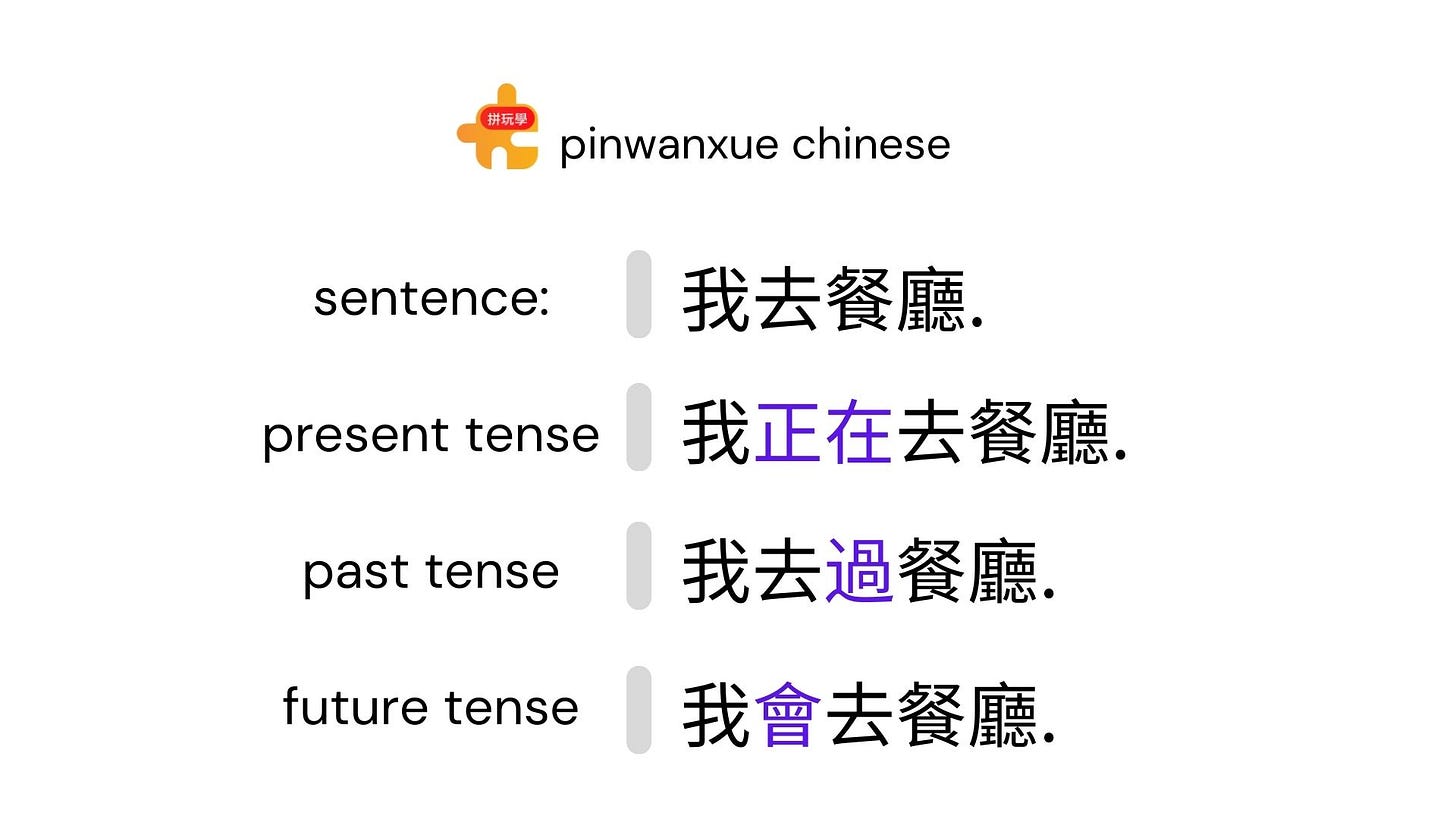The basic rules of Chinese grammar
Hey there, language learners! We’re diving deep into the world of Chinese grammar today, so get ready to level up your language skills! You can skip to whatever part you want to learn, or read through the whole thing and become a grammar master!
Verb + Noun Strategy
If memorizing phrases is not your forte, using a verb+noun strategy can help you piece together phrases just like a puzzle! Basically, if there’s a verb, like 吃, you can mix and match that with many other nouns to create new phrases. An example here: I paired 吃 with 鱼 to get 吃鱼, which is a new phrase! I have a Youtube video and Medium article on this topic, so be sure to check them out! Once you can piece together phrases, you'll be on your way to forming full sentences.
Sentence Construction
One of the most important skills in Chinese is sentence construction! You don't need to remember every sentence you encounter. You can make your own sentences! Just follow the grammar rules properly. Basically, when you're combining words to make a sentence, first put the subject(s), then the time, location, and adjectives, and finish with the verb and noun. This order is so essential that I made a picture of it (you can take a screenshot if you want).
Also, make sure you know this: the time, location, and adjectives don’t need to be in a sentence, such as in the example below. The subject and verb are the only required (note that for a question, you need the subject, one of the 5 Ws, a question, and a verb):
So, what if you wanted to ask a question in Chinese? It's pretty easy, just follow these steps: start with the subject, then one of the 5 W's, the question, the adjective(s), and finally the verb + noun. Now, if you’re wondering what the five W’s in Chinese are, they’re ‘誰’ (who), ‘什麼’(what), ‘什麼時候’ (when), ‘哪裡’ (where), and ‘為什麼’ (why). If you're looking for more details, check out this Youtube video I made!
Past, Present, and Future Tenses
Alright, now you’re probably wondering about how to show past, present, and future tenses in Chinese. Don’t worry, I’ve got you covered! Chinese sentences are past tense by default, but to emphasize the past tense we just attach ‘了’ to the end of the verb that’s in the sentence. To say that you have been somewhere or done something at least once, add ‘過’. If you want to make it future tense attach ‘會’ or ‘要’ to the verb, and if you want to show that it is happening right now, add ‘現在’ or ‘正在’. It’s simple, isn’t it?

More about Chinese Grammar
And then there’s the degrees of intensity used in sentences. These show you how intense the adjective is. You’ll most likely come across these: 不:meaning ‘not’, ‘不太’, meaning not really, ‘有點’, meaning ‘kinda’, ‘很’, meaning ‘very’, ‘超 and 非常’ meaning ‘extremely’, and ‘最’, meaning ‘the most’. Finally, there’s verb reduplication and serial verbs, but that’s considered advanced grammar, which we’ll tackle in our next article!
So there you have it, a comprehensive guide to Chinese grammar. Note that these are only the basics, but I’m going to delve into more advanced topics in new articles, so stay tuned! 😊 Keep practicing and don't give up – before you know it, you'll be speaking like a native!





